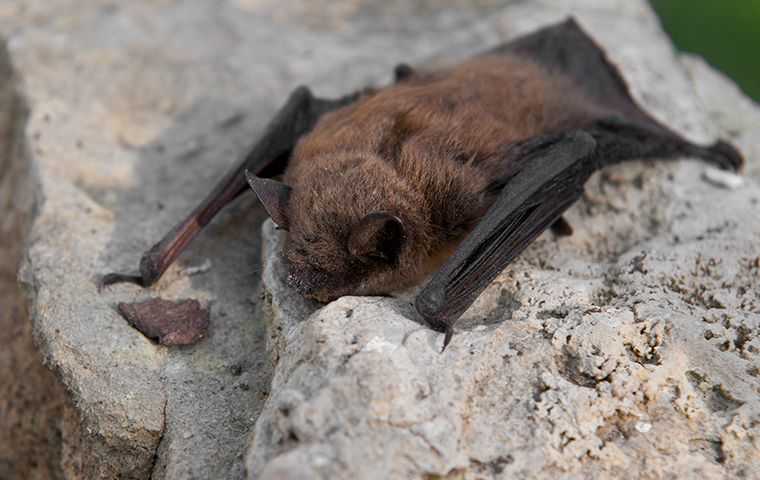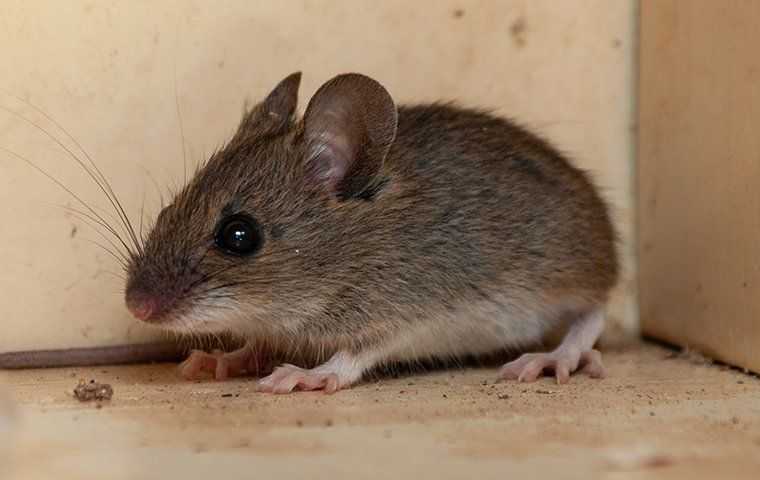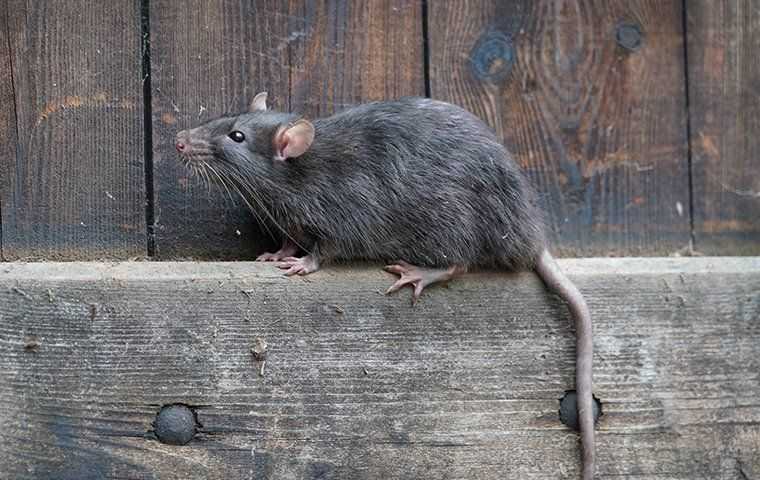
Pest Library
What You Need To Know About Pests In And Around Kansas City, Kansas
If you are tired of mice, rats, and bats trying to call your property home, this pest library and the pest control professionals at Orange Mouse are here to help. The more you understand about pest behaviors, the easier it is to make your property less appealing to them. Learning about bats, mice, and rats, including what attracts them, common entry points for rodents, and how to keep them away, is critical to maintaining a pest-free property.
Bats

Bats are most well-known for being the only mammals capable of actual flight. In our region, bats feed primarily on beetles, moths, mosquitoes, and other insects. They are eco-important species, helping to control populations of insects through their feeding habits. Like other predatory species, bats like to live in areas that offer them easy access to their prey.
Bats are most active when their insect prey is, from May thru October and at dawn and dusk. Backyards with lots of vegetation, trees, pools, standing water, and other water features are most attractive to bats. When bats are active in your yard, they will eventually make their way into your home. Our homes' attics, chimneys, and wall voids offer bats a safe daytime roosting spot.
Keeping bats out of our homes is vital. Bats spread diseases, including rabies. While not every bat you encounter is infected with rabies, there is a possibility. Never try to trap or directly handle a bat; like other wild animals, bats retaliate by biting or scratching when threatened. Another health risk created by bats is the fungus that grows in bat droppings which can cause severe respiratory issues in people. It is also important to remember that if bats are moving to and from your home, so can other pests like mice and rats. Solving your bat problem will help you to maintain a home free of unwanted pests.
Avoid sharing your home with bats by implementing the following helpful prevention tips:
- Remove areas of standing water from your property that attract insects bats like to eat.
- Make sure all your home’s chimneys have caps on them.
- Repair damaged roof shingles and seal gaps in roof intersections.
- Install bat houses at the perimeter of your property to draw bats away from your home.
If bats find a way into your home or you want to prevent their future presence, don’t hesitate to call. We will provide effective bat exclusion services to help you meet your goal of bat-free property.
Mice
Mice are small rodents that can squeeze their bodies through tiny spaces; this makes it quite challenging to keep these pests out of our Kansas City homes. Mice are frequent visitors inside houses because they provide mice with their basic needs: food, water, and shelter. Mice use our structures as a place of respite, a safe place to raise their young, and a place to forage for food. Like people, these rodents are omnivores, and our kitchens and pantries offer them an all-they-can-eat buffet.
Once mice become comfortable inside our homes, they quickly take over (one female can produce 25 to 60 offspring in a year) and cause a lot of destruction. Mice, like all rodents, have continuously growing sharp front incisors that they keep from overgrowing by gnawing on objects that they can fit their teeth around. In our houses, mice and their teeth cause significant damage to wires, drywall, furniture, cabinets, food containers, and bedding. In addition to the damage they cause, mice carry many diseases and are a health risk. They spread diseases, bacteria, and allergens that make people ill.

Rats

Like mice, rats are one of the most common types of rodents to find their way into our houses. In our area you will find the Norway rat and the roof rat. The easiest way to tell adult mice from adult rats is by their size and tails. Rats are larger than mice and have thick, hairless, scaly tails. These rodents are intelligent creatures and, over time, have learned that wherever there are people, they can have their basic needs met. Food is the biggest thing to attract rats to our properties. They love to forage for food from fruit trees, trashcans, gardens, pet food, and chicken coops (eggs).
Along with taking advantage of our outdoor spaces, rats regularly enter our houses, garages, and other outbuildings. Our structures provide them with safe shelter and nesting sites, and our kitchens and pantries with reliable foraging sites. Sharing your home with rats is problematic for many reasons, including that they are disease vectors, carry dangerous parasites like fleas and ticks in their fur, and emit allergens that trigger allergies.
Hear From Our Happy Customers
At Orange Mouse, your satisfaction is our priority! See for yourself what people have to say about working with us.
-
“Mitch was prompt, thorough, and explained in detail what the problem was and his recommendation. He did NOT use scare tactics and did not attempt to oversell. Would refer him to friends.”- Sophia S.
-
“Came out the next day after we called. Did a thorough inspection and explained results and options. Very knowledgeable and professional. We hired them to get the job done.”- Walter H.
-
“Mitch is the guy you don't ever want to have to call but is the only one you should call when you need to. I'll always sing Mitch's praises, because he does the work right the first time.”- Nick A.
-
“Very professional and knowledgeable! Also very timely service and explain all problems.”- Dianne K.
-
“They did a great job. Mitch was excellent. They were professional & responsive in a very timely fashion. I wouldn’t hesitate to recommend them.”- Bruce R.
-
“Great response time, will be recommending them to everyone!”- Hannah H.
-
“On-time and very responsive.”- Angela J.
-
“Wonderful team and execution. Very thorough!”- Katharine H.
-
“- Mackenzie W.
Best company around, would definitely recommend giving them all call!
”
Blog & News
Want all the latest news or updates? Browse through our blog to read our most recent posts and featured articles.
